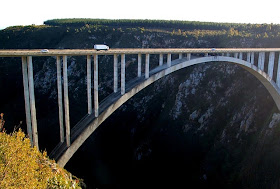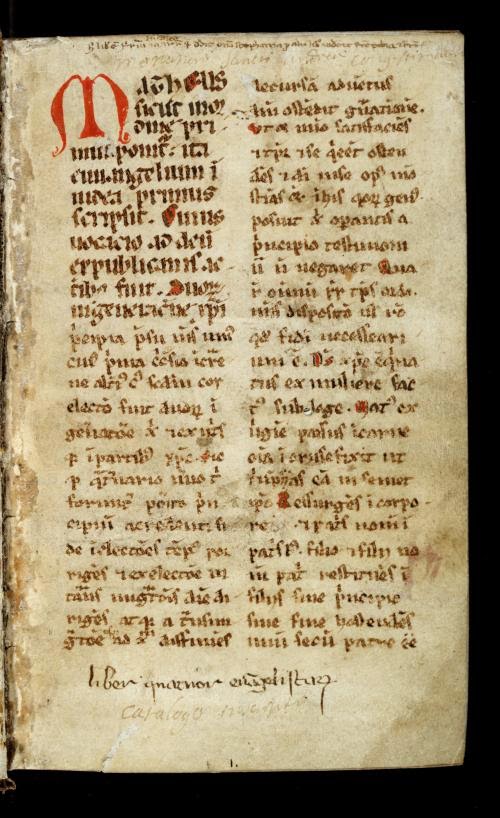The genealogical literature is rife with references to such legal terms as "burden of proof," "standard of proof," clear and convincing evidence," "beyond a reasonable doubt" and many more. On the other hand, there is also a significant segment of the genealogical community that are devoted to the "scientific method" as applied to genealogy. Those promoting scientific genealogical research speak in terms of proposing an hypothesis, developing a theory and examining the evidence to support the theory. This last step breaks down because of the inability of an historical researcher to create experiments to support their theories. There are even those who would support a middle ground that incorporates terminology and methodology from both science and law.
Back in the very early 1930s, the very influential U.S. genealogist, Donald Lines Jacobus, published an influential book that helped begin, what many consider, the modern view of genealogical research. Those who followed Jacobus came to be called the "Jacobus School" of genealogy.
Jacobus, Donald Lines.
Genealogy As Pastime and Profession. New Haven, Conn: Tuttle, Morehouse & Taylor Co, 1930.
Jacobus, along with other prominent genealogists of his day, promoted their viewpoints about genealogical research in a publication that Jacobus founded in 1922 called the New Haven Genealogical Magazine which later became The American Genealogist. The title of the journal was not original as it had been used since the 1860s for a bibliographic compilation of genealogical monographs published in the United States by the genealogist William Henry Whitmore. See
Whitmore, William Henry.
The American Genealogist Being a Catalogue of Family Histories and Publications Containing Genealogical Information Issued in the United States, Arranged Chronologically. Albany: J. Munsell, 1868.
There are an almost vanishingly small number of genealogists who are aware of the history of their persuasion. One of the very few sources for an overview of this history is the book:
Weil, François. Family Trees:
A History of Genealogy in America. 2013.
One of the major contributions of the Jacobus School of genealogy was the emphasis on providing source documentation for any derived genealogical conclusion. This is an area of genealogy that we are still struggling with today.
Before anyone becomes embroiled in the issues regarding genealogical proof or the lack thereof, I would strongly suggest that they gain an historical perspective by reading Weil's book (available in ebook format). A good summary, without much commentary, of the status of genealogical proof (if it exists at all) is also contained in the section of Elizabeth Shown Mills' book called "Fundamentals of Evidence Analysis." See
Mills, Elizabeth Shown.
Evidence Explained: Citing History Sources from Artifacts to Cyberspace. Baltimore, Md: Genealogical Pub. Co, 2007.
In considering these and many more discussions on the issue of genealogical proof, of course, I have my own views on the subject. In this series, I have raised a very few of the complex issues involved. Fundamental to understanding the subject of genealogy is a recognition that the use of the word "proof" does not imply either the finality of legal proof or the experimental necessity of scientific proof. Proof, in the historical sense, is never a final destination. It is always a continuing journey. Those who crave finality in their genealogical research will never be satisfied. I would suggest that using the word "proof" is inappropriate. Genealogists can reach conclusions based on the available documentation, but to say that they have proved any particular fact decries the reality of historical research.
It is time for a hypothetical. Let's suppose that I am trying to determine the birth date of a remote ancestor. After an "exhaustive" search (whatever that means), I find two documents. Both of these documents seem to be original sources and have exactly the same degree of reliability. But they contradict each other. The birth dates contained in the two documents are off by a significant number of years. Now, I could speculate for ever about the contradiction. I could propose that the documents referred to two different people or that one or the other was incorrect. I could resort to further documentation to try and determine the correct date. In fact, until I found some more conclusive documentation, the question of the exact year of this particular ancestor's birth must remain undecided.
What does it take to convince you that any particular genealogical fact is either true or subject to further documentation? What if you believed your birthdate to be a fact and you had a "birth certificate" to "prove" when you were born? What if you then found out that you were adopted and that your "birth certificate" had been changed by the court and that the day of your birth had also been changed?
In both situations, you could talk of the evidence and you could argue the application of direct, indirect, circumstantial and all others sorts of evidence, but the fact remains that historical investigations are limited to and by the documents preserved in the record. Any and all conclusions drawn by genealogical (or historical) researchers depends on the documents examined and the opinion of the researcher concerning those documents.
Let's suppose that I go online and find a family tree uploaded by someone who shares a common ancestor with me. Let's further suppose that I copy all of those portions of the family tree that fit into my own ancestry. I do this without verifying or questioning the information in the family tree at all. Most experienced genealogists today would condemn this type of "research" out of hand. But, think about it for a minute. That same experienced genealogist will find a census record or some other historical record and copy it out in second without ever questioning the validity of their conclusions.
What is missing from the common genealogical statements about proof, evidence etc. is the need for methodological skepticism, that is, the need to approach all claims or facts to intense scrutiny in order to sort out what is true or believable from what is false.
In all my years of legal trial practice, most, if not all, of my clients were absolutely convinced that they were right and that the opposing side was wrong. Usually, in my experience, both were wrong even though a trial of the facts and issues was decided in favor of one or the other. Let's not think we are moving beyond personal opinion merely because we use legal or scientific terminology.

.jpg)






.jpg)

















.jpg)
.jpg)
.jpg)
.jpg)

.jpg)



